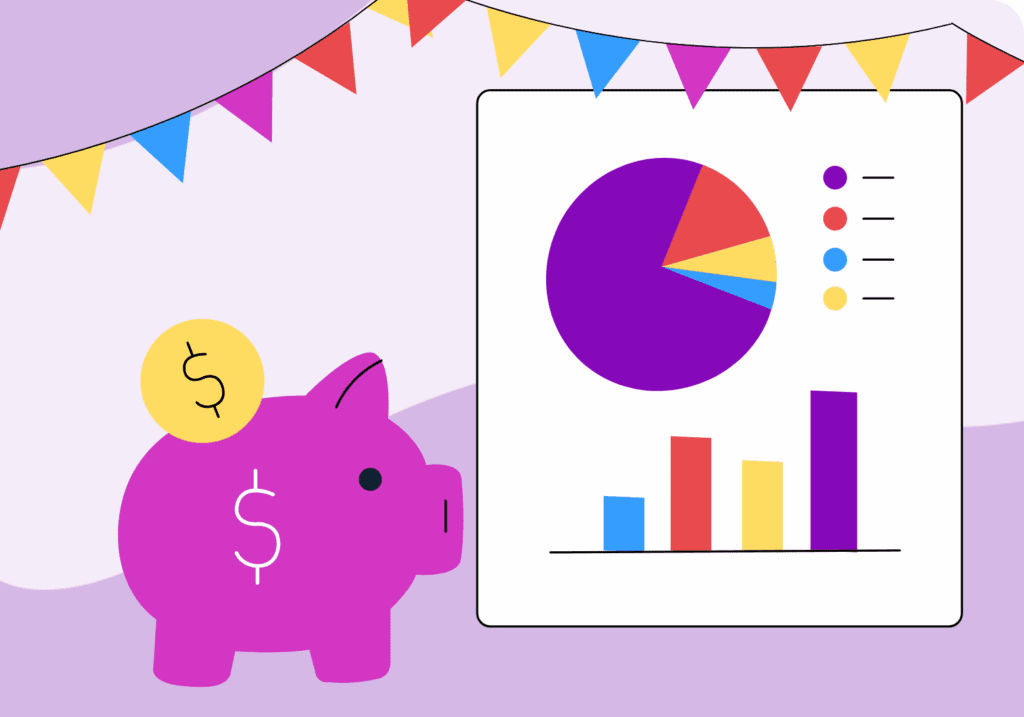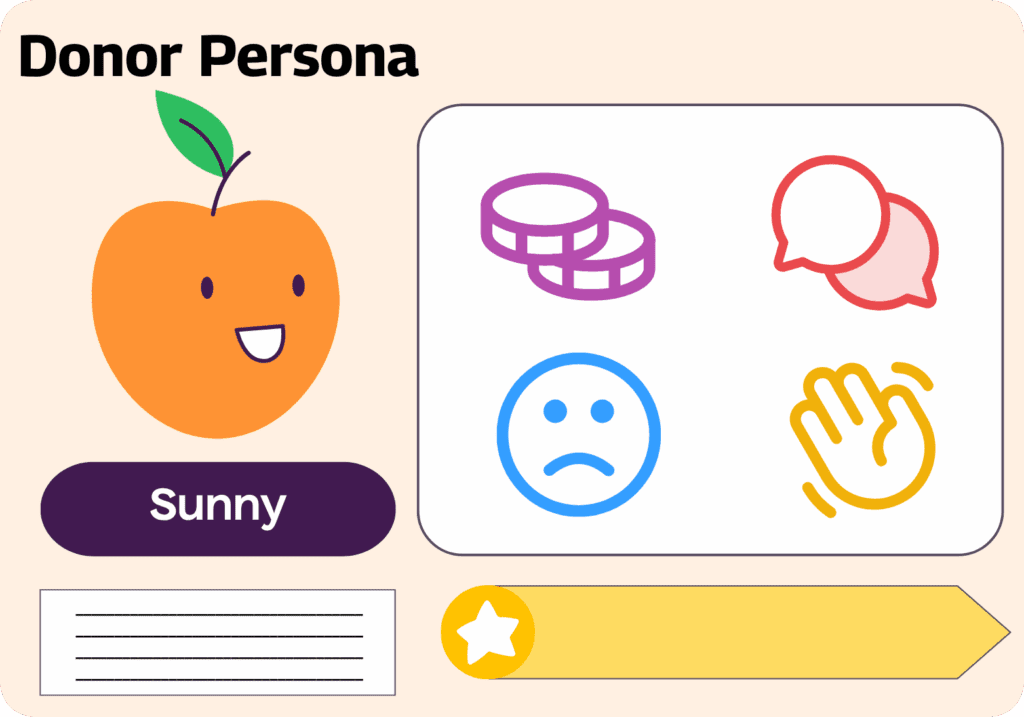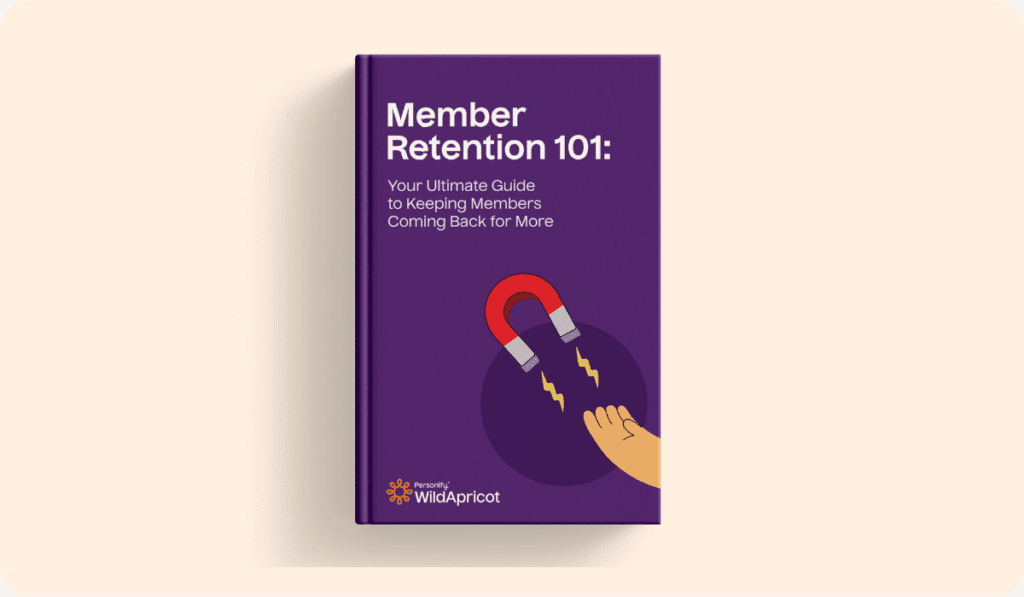The first step in starting a nonprofit is figuring out how to bring your vision into reality. If there’s any tool that can really help you hit the ground running, it’s a nonprofit business plan!
With a plan in place, you not only have a clear direction for growth, but you can also access valuable funding opportunities.
Here, we’ll explore:
- Why a business plan is so important
- The components of a business plan
- How to write a business plan for a nonprofit specifically
We also have a few great examples, as well as a free nonprofit business plan template.
Let’s get planning!
What Is a Nonprofit Business Plan?
A nonprofit business plan is the roadmap to your organization’s future. It lays out where your nonprofit currently stands in terms of organizational structure, finances and programs. Most importantly, it highlights your goals and how you aim to achieve them!
These goals should be reachable within the next 3-5 years—and flexible! Your nonprofit business plan is a living document, and should be regularly updated as priorities shift. The point of your plan is to remind you and your supporters what your organization is all about.
This document can be as short as one page if you’re just starting out, or much longer as your organization grows. As long as you have all the core elements of a business plan (which we’ll get into below!), you’re golden.
Why Your Nonprofit Needs a Business Plan
While some people might argue that a nonprofit business plan isn’t strictly necessary, it’s well worth your time to make!
Here are 5 benefits of writing a business plan:
Secure funding and grants
Did you know that businesses with a plan are far more likely to get funding than those that don’t have a plan? It’s true!
When donors, investors, foundations, granting bodies and volunteers see you have a clear plan, they’re more likely to trust you with their time and money. Plus, as you achieve the goals laid out in your plan, that trust will only grow.
Solidify your mission
In order to sell your mission, you have to know what it is. That might sound simple, but when you have big dreams and ideas, it’s easy to get lost in all of the possibilities!
Writing your business plan pushes you to express your mission in the most straightforward way possible. As the years go on and new opportunities and ideas arise, your business plan will guide you back to your original mission.
From there, you can figure out if you’ve lost the plot—or if it’s time to change the mission itself!
Set goals and milestones
The first step in achieving your goals is knowing exactly what they are. By highlighting your goals for the next 3-5 years—and naming their key milestones!—you can consistently check if you’re on track.
Nonprofit work is tough, and there will be points along the way where you wonder if you’re actually making a difference. With a nonprofit business plan in place, you can actually see how much you’ve achieved over the years.
Attract a board and volunteers
Getting volunteers and filling nonprofit board positions is essential to building out your organization’s team. Like we said before, a business plan builds trust and shows that your organization is legitimate. In fact, some boards of directors actually require a business plan in order for an organization to run!
An unfortunate truth is that many volunteers get taken advantage of. With a business plan in place, you can show that you’re coming from a place of professionalism.
Research and find opportunities
Writing a business plan requires some research!
Along the way, you’ll likely dig into information like:
- Who your ideal donor might be
- Where to find potential partners
- What your competitors are up to
- Which mentorships or grants are available for your organization
- What is the best business model for a nonprofit like yours
With this information in place, not only will you have a better nonprofit business model created—you’ll also have a more stable organization!
Free Nonprofit Business Plan Template
If you’re feeling uncertain about building a business plan from scratch, we’ve got you covered!
Here is a quick and simple free nonprofit business plan template.
Feel free to add anything else that you think might be important—but this will make sure you have all the basics set!
Basic Format and Parts of a Business Plan
Now that you know what a business plan can do for your organization, let’s talk about what it actually contains!
Here are some key elements of a business plan:
Format
First of all, you want to make sure your business plan follows best practices for formatting. After all, it’ll be available to your team, donors, board of directors, funding bodies and more!
Your nonprofit business plan should:
- Be consistent formatted
- Have standard margins
- Use a good sized font
- Keep the document to-the-point
- Include a page break after each section
- Be proofread
Sections
Curious about what each section of the document should look like?
Here are the essential parts of a business plan:
- Executive Summary: This is your nonprofit’s story—it’ll include your goals, as well as your mission, vision and values.
- Products, programs and services: This is where you show exactly what it is you’re doing. Highlight the programs and services you offer, and how they will benefit your community.
- Operations: This section describes your team, partnerships and all activities and requirements your day-to-day operations will include.
- Marketing: Your marketing plan will cover your market, market analyses and specific plans for how you will carry out your business plan with the public.
- Finances: This section covers an overview of your financial operations. It will include documents like your financial projections, fundraising plan, grants and more
- Appendix: Any additional useful information will be attached here.
We’ll get into these sections in more detail below!
How to Write a Nonprofit Business Plan in 12 Steps
Feeling ready to put your plan into action? Here’s how to write a business plan for a nonprofit in 12 simple steps!
1. Research the market
Take a look at what’s going on in your corner of the nonprofit sector. After all, you’re not the first organization to write a business plan!
Research:
- How your competitors’ business plans are structured
- What your beneficiaries are asking for
- Potential partners you’d like to reach
- Your target donors
- What information granting bodies and loan providers require
All of this information will show you what parts of your business plan should be given extra care. Sending out donor surveys, contacting financial institutions and connecting with your beneficiaries are a few tips to get your research going.
If you’re just getting started out, this can help guide you in naming your nonprofit something relevant, eye-catching and unique!
2. Write to your audience
Your business plan will be available for a whole bunch of people, including:
- Granting bodies
- Loan providers
- Prospective and current board members
- Donors
- Volunteers
Each of these audiences will be coming from different backgrounds, and looking at your business plan for different reasons. If you keep your nonprofit business plan accessible (minimal acronyms and industry jargon), you’ll be more likely to reach everyone.
If you’d like, it’s always possible to create a one page business plan AND a more detailed one. Then, you can provide the one that feels most useful to each audience!
3. Write your mission statement
Your mission statement defines how your organization aims to make a difference in the world. In one sentence, lay out why your nonprofit exists.
Here are a few examples of nonprofit mission statements:
- Watts of Love is a global solar lighting nonprofit bringing people the power to raise themselves out of the darkness of poverty.
- CoachArt creates a transformative arts and athletics community for families impacted by childhood chronic illness.
- The Trevor Project fights to end suicide among lesbian, gay, bisexual, transgender, queer, and questioning young people.
In a single sentence, each of these nonprofits defines exactly what it is their organization is doing, and who their work reaches. Offering this information at a glance is how you immediately hook your readers!
4. Describe your nonprofit
Now that your mission is laid out, show a little bit more about who you are and how you aim to carry out your mission. Expanding your mission statement to include your vision and values is a great way to kick this off!
Use this section to highlight:
- Your ideal vision for your community
- The guiding philosophy and values of your organization
- The purpose you were established to achieve
Don’t worry too much about the specifics here—we’ll get into those below! This description is simply meant to demonstrate the heart of your organization.
5. Outline management and organization
When you put together your business plan, you’ll want to describe the structure of your organization in the Operations section.
This will include information like:
- Team members (staff, board of directors, etc.)
- The specific type of nonprofit you’re running
- Location
If you’re already established, make a section for how you got started! This includes your origin story, your growth and the impressive nonprofit talent you’ve brought on over the years.
6. Describe programs, products and services
This information will have its own section in your nonprofit business plan—and for good reason!
It gives readers vital information about how you operate, including:
- The specifics of the work you do
- How that work helps your beneficiaries
- The resources that support the work (partnerships, facilities, volunteers, etc!)
- If you have a membership base or a subscription business model
Above all, highlight what needs your nonprofit meets and how it plans to continue meeting those needs. Really get into the details here! Emphasize the work of each and every program, and if you’re already established, note the real impact you’ve made.
Try including pictures and graphic design elements so people can feel your impact even if they’re simply skimming.
7. Create an Executive Summary
Your Executive Summary will sit right at the top of your business plan—in many ways, it’s the shining star of the document! This section serves as a concise and compelling telling of your nonprofit’s story. If it can capture your readers’ attention, they’re more likely to read through the rest of the plan.
Your Executive Summary should include:
- Your mission, vision and values
- Your goals (and their timelines!)
- Your organization’s history
- Your primary programs, products and services
- Your financing plan
- How you intend on using your funding
This section will summarize the basics of everything else in your plan. While it comes first part of your plan, we suggest writing it last! That way, you’ll already have the information on hand.
You can also edit your Executive Summary depending on your audience. For example, if you’re sending your nonprofit business plan to a loan provider, you can really focus on where the money will be going. If you’re trying to recruit a new board member, you might want to highlight goals and impact, instead.
8. Write a marketing plan
Having a nonprofit marketing plan is essential to making sure your mission reaches people—and that’s especially true for your business plan.
If your nonprofit is already up and running, detail the work you’re currently doing, as well as the specific results you’ve seen so far. If you’re new, you’ll mostly be working with projections—so make sure your data is sound!
No matter what, your Marketing Plan section should market research such as:
- Beneficiary information
- Information on your target audience/donor base
- Information on your competitors
- Names of potential partners
Data is your friend here! Make note of market analyses and tests you’ve run. Be sure to also document any outreach and campaigns you’ve previously done, as well as your outcomes.
Finally, be sure to list all past and future marketing strategies you’re planning for. This can include promotion, advertising, online marketing plans and more.
9. Create a logistics and operations plan
The Operations section of your business plan will take the organizational information you’ve gathered so far and expand the details! Highlight what the day-to-day will look like for your nonprofit, and how your funds and resources will make it possible.
Be sure to make note of:
- The titles and responsibilities of your core team
- The partners and suppliers you work with
- Insurance you will need
- Necessary licenses or certifications you’ll maintain
- The cost of services and programs
This is the what and how of your business plan. Lean into those details, and show exactly how you’ll accomplish those goals you’ve been talking about!
10. Write an Impact Plan
Your Impact Plan is a deep dive into your organization’s goals. It grounds your dreams in reality, which brings both idealists and more practically-minded folks into your corner!
Where your Executive Summary lays out your ambitions on a broader level, this plan:
- Clarifies your goals in detail
- Highlights specific objectives and their timelines
- Breaks down how you will achieve them
- Shows how you will measure your success
Your Impact Plan will have quite a few goals in it, so be sure to emphasize which ones are the most impactful on your cause. After all, social impact is just as important as financial impact!
Speaking of…
11. Outline the Financial Plan
One of the main reasons people want to know how to write a nonprofit business plan is because of how essential it is to receiving funding. Loan providers, donors and granting bodies will want to see your numbers—and that’s where your Financial Plan comes in.
This plan should clearly lay out where your money is coming from and where it will go. If you’re just getting started, check out what similar nonprofits are doing in order to get realistic numbers. Even if you’re starting a nonprofit on a tight budget, every bit of financial information counts!
First, map out your projected (or actual) nonprofit revenue streams, such as:
- Expected membership contributions
- Significant donations
- Grants
- In-kind support
- Fundraising plan
Then, do the same with your expenses:
- Startup costs
- Salaries
- Insurance
- Typical bills
- Web hosting
- Membership management software
- Subscription
- Costs of programs
If your nonprofit is already up and running, include your past accounting information. Otherwise, keep working with those grounded projections!
To make sure you have all of your information set, include documents like:
- Income statement
- Cash flow statement
- Balance sheet
This information comes together to show that your nonprofit can stay above water financially. Highlighting that you can comfortably cover your operational costs is essential. Plus, building this plan might help your team find funding gaps or opportunities!
12. Include an Appendix
Your appendix is for any extra pieces of useful information for your readers.
This could be documents such as:
- Academic papers about your beneficiaries
- Publications on your nonprofit’s previous success
- Board member bios
- Organizational flow chart
- Your IRS status letter
Make sure your additions contribute to your nonprofit’s story!
Examples of Business Plans for Nonprofits
Here are two great examples of nonprofit business plans. Notice how they’re different depending on the size of the organization!
Nonprofit Recording Co-op Business Plan
This sample nonprofit business plan shows what a basic plan could look like for a hobbyists’ co-op. If your nonprofit is on the smaller, more local side, this is a great reference!
What we like:
- Details on running a basic membership model
- Emphasis on what it means to specifically be a sustainable cooperative
- A list of early milestones, such as hitting their 100th member
- Clarification that all recordings will be legal
Nonprofit Youth Services Business Plan
This sample nonprofit business plan is for a much larger organization. Instead of focusing on the details of a membership model, it gets deeper into programs and services provided.
What we like
- The mission is broken down by values
- A detailed look at what each program provides
- A thorough sales plan
- Key assumptions are included for the financial plan
How to Create a Nonprofit Business Plan With Confidence
We hope this sheds some light on how creating a nonprofit business plan can help your organization moving forward! Remember: you know what you want for your organization. A business plan is simply a tool for making those dreams a reality.
Is a membership program part of your business plan? Check out WildApricot’s award-winning membership management software!
With our 60-day free trial, you’ll have all the time you need to fall in love with what we have to offer.









